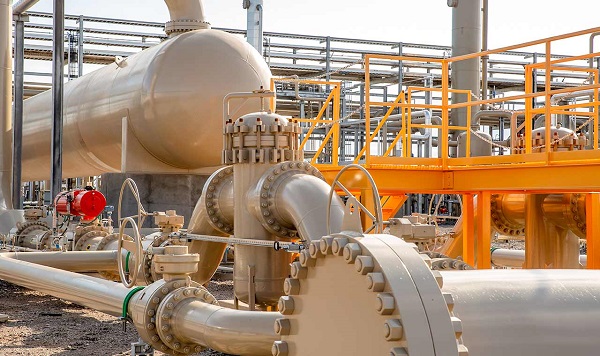New Regulations Place 400,000+ Miles of Gas Gathering Pipelines Under Federal Oversight
WASHINGTON – The U.S. Department of Transportation’s Pipeline and Hazardous Materials Safety Administration (PHMSA) is issuing a final rule that expands federal pipeline safety oversight to all onshore gas gathering pipelines.

The rule, initiated over 10 years ago, expands the definition of a “regulated” gas gathering pipeline that is more than 50 years old. It will — for the first time — apply federal pipeline safety regulations to tens of thousands of miles of unregulated gas gathering pipelines. The final rule will — also for the first time — require pipeline operators to report safety information for all gas gathering lines, representing more than 425,000 additional miles covered by federal reporting requirements.
“After years in development, these new regulations represent a major step to enhance and modernize pipeline safety and environmental standards,” said U.S. Transportation Secretary Pete Buttigieg. “This rule will improve safety, reduce greenhouse gas emissions, and result in more jobs for pipeline workers that are needed to help upgrade the safety and operations of these lines.”
Gas gathering lines typically transport natural gas from production facilities to interstate gas transmission pipelines. Historically, gathering lines have been lower-pressure, lower risk, smaller-diameter lines, typically situated in lesser-populated, rural areas.
With the increase in hydraulic fracturing (fracking) over the last 15 years, the volume of gas extracted and transported through gathering lines has increased significantly. Gathering lines with diameters, operating pressures, and associated risk factors similar to larger interstate transmission lines have become more common.
A number of incidents have occurred on these high pressure, unregulated lines — tragically leading to fatalities, injuries, and large amounts of greenhouse gas (methane) emissions. On June 8, 2010, a bulldozer struck a 14-inch gas gathering line in Darrouzett, Texas, causing an explosion that killed two workers and injured three others, including one worker who was critically injured and required medical evacuation by helicopter. On June 29, 2010, three men working on a 24-inch gas gathering line in Grady County, Oklahoma, were injured when it exploded; one worker was airlifted to a nearby hospital with burns covering half of his body. On August 9, 2018, corrosion on a 10-inch gas gathering line resulted in another explosion in Midland, killing a three-year-old girl and badly burning three other members of her family.
More than 1,000 metric tons of high-global-warming-potential methane gas are emitted, on average, with each pipeline rupture. A single rupture from a large, high-pressure gas pipeline can release more than 1,300 metric tons of methane emissions into the atmosphere.
Altogether, PHMSA estimates that there are at least 425,000 miles of onshore gas gathering lines that have not been subject to PHMSA oversight but will be after this rule takes effect. The rule establishes a new category of regulated onshore gathering lines covering higher-pressure lines that pose a heightened risk in rural areas—and applies existing pipeline safety requirements to tens of thousands of miles of these pipelines.
The rule also requires all onshore gas gathering pipeline operators to begin filing incident reports and comprehensive annual reports. Currently, without this data, estimates for the greenhouse gas impacts of highly potent methane pollution are uncertain. The Pipeline Safety, Regulatory Certainty, and Job Creation Act of 2011 required PHMSA to review existing regulations for gas gathering lines. The draft of this rule was first proposed [more than five years ago] on April 8, 2016. PHMSA is currently working to develop additional regulations that will enhance the safety oversight of gas gathering pipelines.
Related News
Related News

- Enbridge Plans 86-Mile Pipeline Expansion, Bringing 850 Workers to Northern B.C.
- Intensity, Rainbow Energy to Build 344-Mile Gas Pipeline Across North Dakota
- U.S. Moves to Block Enterprise Products’ Exports to China Over Security Risk
- Strike Pioneers First-of-Its-Kind Pipe-in-Pipe Installation on Gulf Coast with Enbridge
- 208-Mile Mississippi-to-Alabama Gas Pipeline Moves Into FERC Review
- U.S. Pipeline Expansion to Add 99 Bcf/d, Mostly for LNG Export, Report Finds
- A Systematic Approach To Ensuring Pipeline Integrity
- 275-Mile Texas-to-Oklahoma Gas Pipeline Enters Open Season
- LNG Canada Start-Up Fails to Lift Gas Prices Amid Supply Glut
- Kinder Morgan Gas Volumes Climb as Power, LNG Demand Boost Pipeline Business




Comments